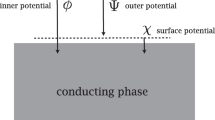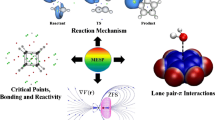Abstract
Electrostatic Potential (ESP) generated by a chemical species is widely used as a tool for exploring its properties and locating potential sites for interaction with other moieties. In this article, the features of ESPs of atoms, ions and molecules are discussed.
Similar content being viewed by others
Suggested reading
P Politzer and D G Truhlar, ed.Chemical Applications of Atomic and Molecular Electrostatic Potentials, Plenum, New York, 1981.
J S Murray and K D Sen ed.,Molecular Electrostatic Potentials: Concepts and Applications, Elsevier, Amsterdam, 1996.
H Weinstein, P Politzer and S Srebrenik,Theor. Chim. Acta. Berl., 38, 159, 1975.
K D Sen and P Politzer,J.Chem. Phys. 90, 4370, 1980; 91, 5123, 1989.
S R Gadre and R K Pathak,Proc. Indian Acad. Sci. (Chem. Sci), 102, 189, 1990.
R K Pathak and S R Gadre,J. Chem. Phys., 93, 1770, 1990.
S R Gadre, S A Knlkarni and I H Shrivastava,J. Chem. Phys., 96, 5253, 1992.
Author information
Authors and Affiliations
Rights and permissions
About this article
Cite this article
Gadre, S.R., Bhadane, P.K. Electrostatics in chemistry. Reson 4, 40–51 (1999). https://doi.org/10.1007/BF02834319
Issue Date:
DOI: https://doi.org/10.1007/BF02834319




